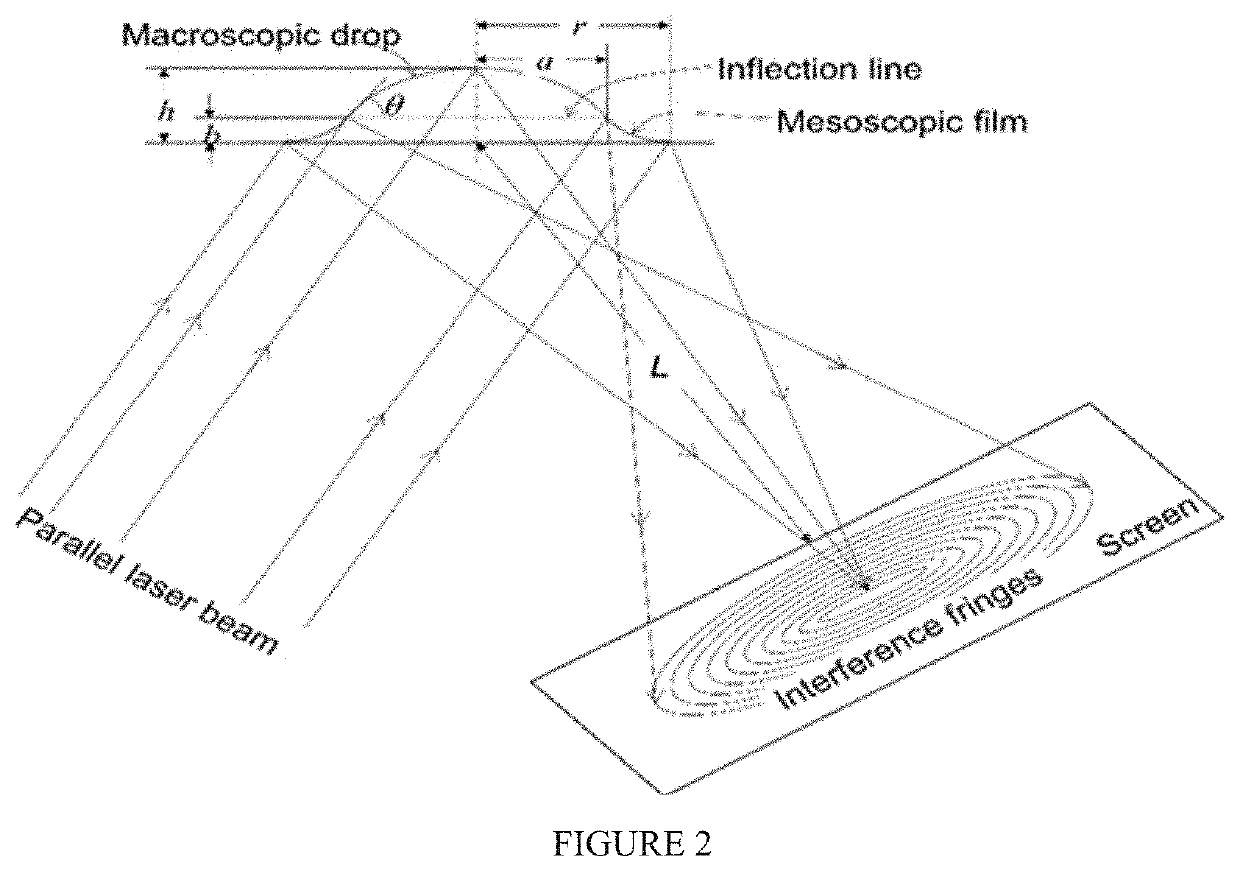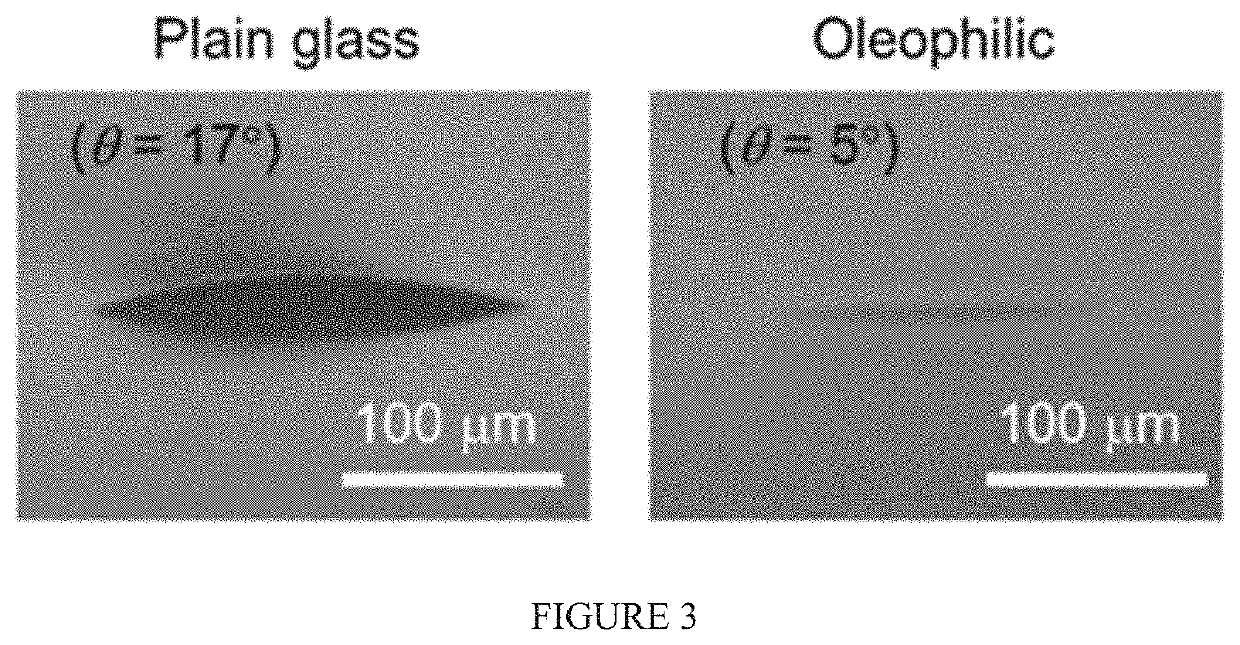Compositions and methods for evaluation of liquid contact angle properties
a liquid contact angle and composition method technology, applied in the field of features evaluation, can solve the problems of time-consuming and laborious, large-scale real-time use, and excessive complexity of the analysis of microscopic features on the surface of an obj
- Summary
- Abstract
- Description
- Claims
- Application Information
AI Technical Summary
Benefits of technology
Problems solved by technology
Method used
Image
Examples
example 1
[0063]Dual Profile of Droplet Surface
[0064]A sessile droplet is formed with two parts in its surface profile. One part is an upper profile that is a macroscopic dorm placing on the apex of droplet. The second part is a lower profile that is mesoscopic film attached at the contact line of droplet. Both profiles are connected along an inflection line (FIG. 1). The dual droplet profile is defined with several parameters such as the droplet's height (h), the droplet's radius (r), the radial (a) and the axial (b) coordinates of inflection line, and the thickness of precursor film.
[0065]In the instant example the upper profile shape is presumed to be a spherical cap and the lower profile shape is presumed to be a hyperbola curve. The contact angle of droplet is defined as the slope of droplet surface at the inflection point. The profile of spherical cap can be obtained with droplet height, the coordinates of inflection point, and a contact angle that is associated with the curvature of sp...
example 2
Internal Reflection and Interference Fringes
[0068]The interference fringe is made by the internal reflection (IR) system with an equilateral triangle prism (SF10, n=1.732 at 633 nm). The optical ray tracing about total internal reflection on a droplet surface is illustrated in FIG. 1. A droplet is placed on the upper side of prism. A He—Ne laser (λ=633 nm) is used as a light source to produce the interferometric fringes of light on a screen. A coherent, parallel beam (w=0.8 mm) of a laser is incident on the left side of prism and reflects on the upper surface of liquid droplet. Total internal reflection associated with a liquid droplet involves the optical aberration of reflection beam due to the curved profile of droplet surface. The laser beam reflected on the droplet surface is not parallel any more while it passes out through the right side of prism. Eventually, due to the dual profile of droplet surface, the laser beam arrives at different coordinates on a screen according to t...
example 3
Optical Path Difference
[0070]Calculating the optical path difference is determined by how the interference fringes are formed on the screen. Two parallel rays are reflected on the dual profile of the droplet and projected to the same point on the screen, which is far away from the droplet (L) (FIG. 2). The optical path difference (OPD) between the two beams can be seen as the distance difference between line ABCD and line EFGH. The recursive OPD formula is obtained by multiplying the physical distance by the refractive index of the medium.
OPD=n1AB_+n2(BC_+CD_)-n1GH_-n2(EF_+FG_)=n1sinθinBE_+n2(BC_+CD_)-n1sinθoutDG_-n2(EF_+FG_)
[0071]The interference patterns appearing on the screen are related to the OPD obtained in the previous step. If the OPD is an integral multiple of the wavelength of the laser beam used, constructive interference occurs to create a bright pattern. There is a dark area between the two bright patterns, which occurs when the OPD is an integer multiple...
PUM
 Login to View More
Login to View More Abstract
Description
Claims
Application Information
 Login to View More
Login to View More - R&D
- Intellectual Property
- Life Sciences
- Materials
- Tech Scout
- Unparalleled Data Quality
- Higher Quality Content
- 60% Fewer Hallucinations
Browse by: Latest US Patents, China's latest patents, Technical Efficacy Thesaurus, Application Domain, Technology Topic, Popular Technical Reports.
© 2025 PatSnap. All rights reserved.Legal|Privacy policy|Modern Slavery Act Transparency Statement|Sitemap|About US| Contact US: help@patsnap.com



